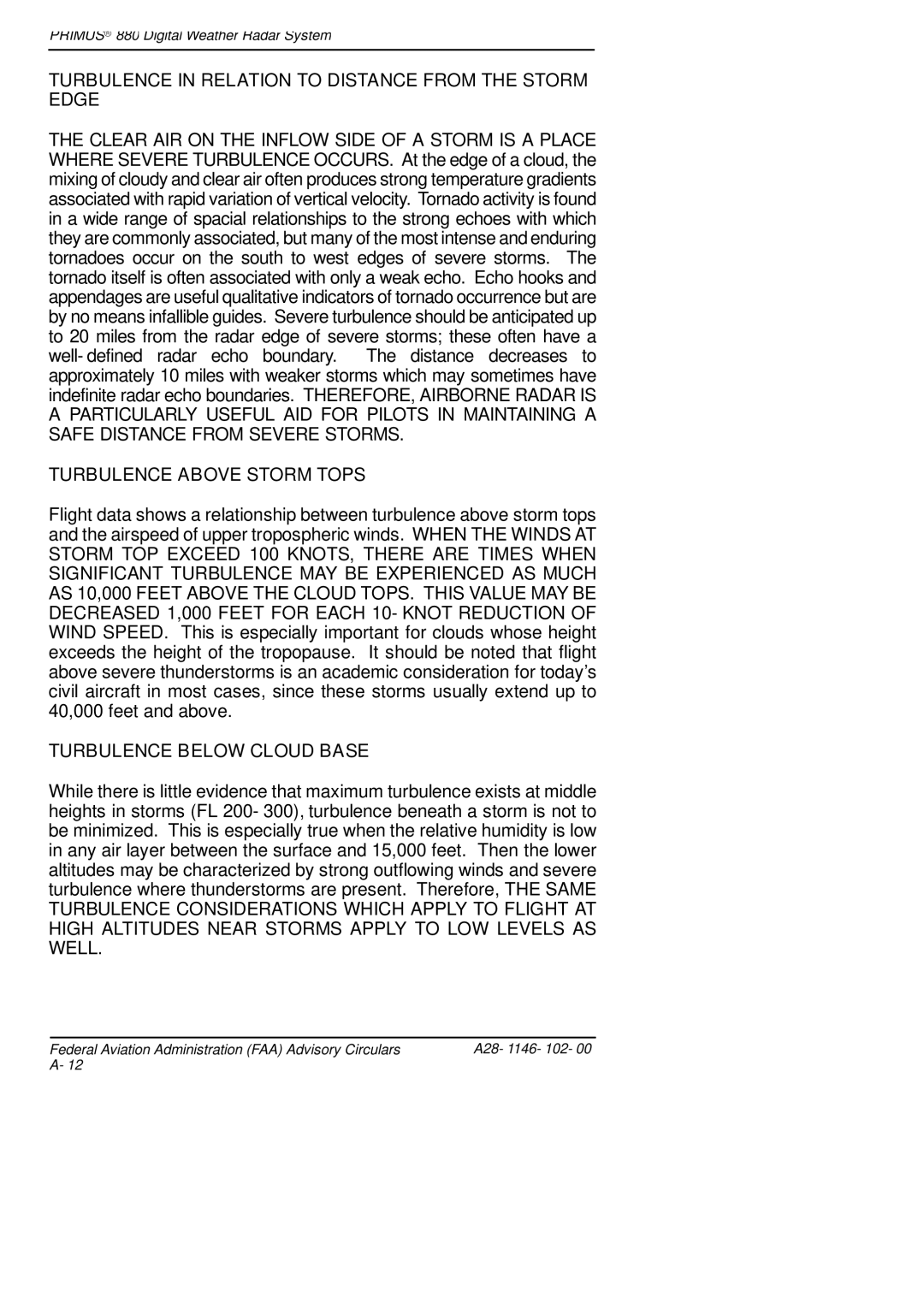
PRIMUSr 880 Digital Weather Radar System
TURBULENCE IN RELATION TO DISTANCE FROM THE STORM EDGE
THE CLEAR AIR ON THE INFLOW SIDE OF A STORM IS A PLACE WHERE SEVERE TURBULENCE OCCURS. At the edge of a cloud, the mixing of cloudy and clear air often produces strong temperature gradients associated with rapid variation of vertical velocity. Tornado activity is found in a wide range of spacial relationships to the strong echoes with which they are commonly associated, but many of the most intense and enduring tornadoes occur on the south to west edges of severe storms. The tornado itself is often associated with only a weak echo. Echo hooks and appendages are useful qualitative indicators of tornado occurrence but are by no means infallible guides. Severe turbulence should be anticipated up to 20 miles from the radar edge of severe storms; these often have a well- defined radar echo boundary. The distance decreases to approximately 10 miles with weaker storms which may sometimes have indefinite radar echo boundaries. THEREFORE, AIRBORNE RADAR IS A PARTICULARLY USEFUL AID FOR PILOTS IN MAINTAINING A SAFE DISTANCE FROM SEVERE STORMS.
TURBULENCE ABOVE STORM TOPS
Flight data shows a relationship between turbulence above storm tops and the airspeed of upper tropospheric winds. WHEN THE WINDS AT STORM TOP EXCEED 100 KNOTS, THERE ARE TIMES WHEN SIGNIFICANT TURBULENCE MAY BE EXPERIENCED AS MUCH AS 10,000 FEET ABOVE THE CLOUD TOPS. THIS VALUE MAY BE DECREASED 1,000 FEET FOR EACH 10- KNOT REDUCTION OF WIND SPEED. This is especially important for clouds whose height exceeds the height of the tropopause. It should be noted that flight above severe thunderstorms is an academic consideration for today’s civil aircraft in most cases, since these storms usually extend up to 40,000 feet and above.
TURBULENCE BELOW CLOUD BASE
While there is little evidence that maximum turbulence exists at middle heights in storms (FL 200- 300), turbulence beneath a storm is not to be minimized. This is especially true when the relative humidity is low in any air layer between the surface and 15,000 feet. Then the lower altitudes may be characterized by strong outflowing winds and severe turbulence where thunderstorms are present. Therefore, THE SAME TURBULENCE CONSIDERATIONS WHICH APPLY TO FLIGHT AT HIGH ALTITUDES NEAR STORMS APPLY TO LOW LEVELS AS WELL.
Federal Aviation Administration (FAA) Advisory Circulars | A28- 1146- 102- 00 |
A- 12 |
|
